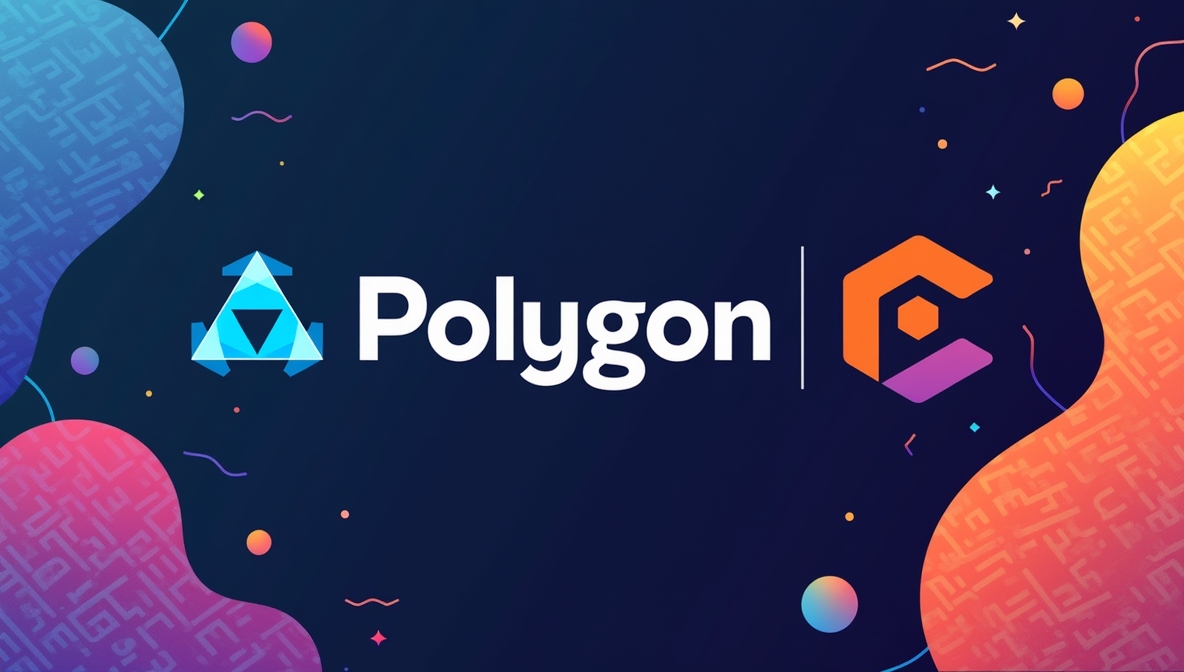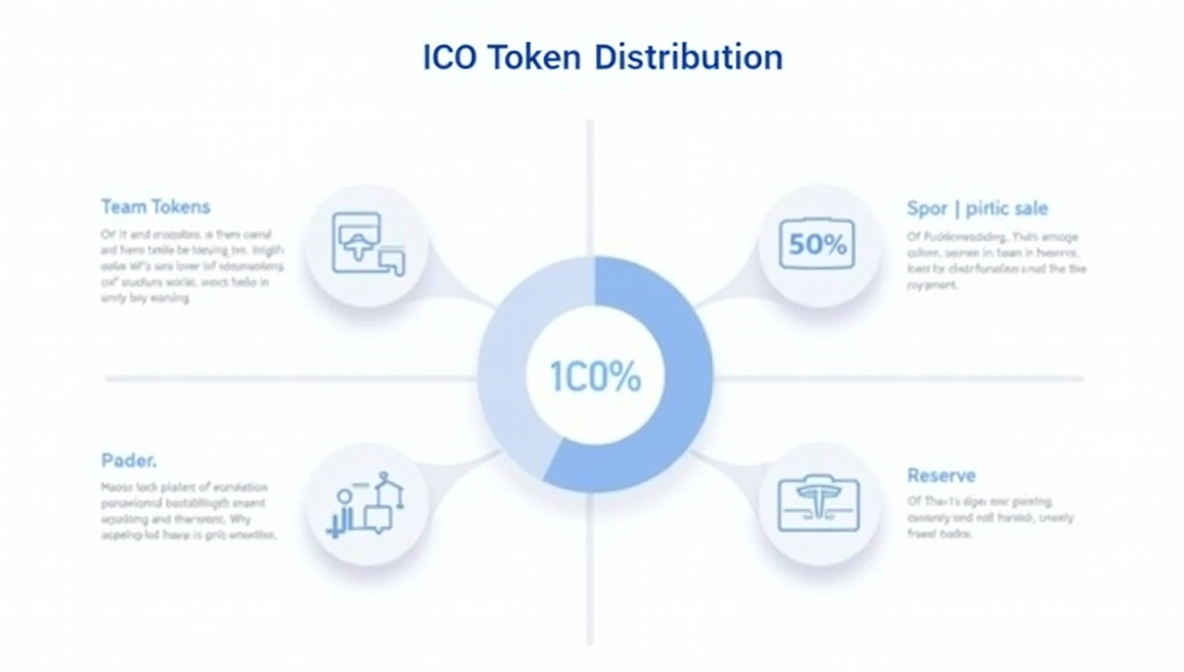Did you know asset tokenization is reshaping how we trade real estate, stocks, and fine art? By increasing liquidity and accessibility, it’s disrupting traditional asset management. But tokenization isn’t simple—it demands a strong regulatory framework to prevent fraud and ensure compliance. As markets evolve, understanding these regulations becomes essential for businesses and investors looking to harness its full potential.
In this guide, we’ll break down what asset tokenization is, why it matters, and the key regulatory challenges to watch. Whether you’re an investor, startup, or enterprise, you’ll gain practical insights to stay secure, compliant, and future-ready in the fast-moving world of tokenized assets.
Understanding Asset Tokenization: The Future of Asset Management
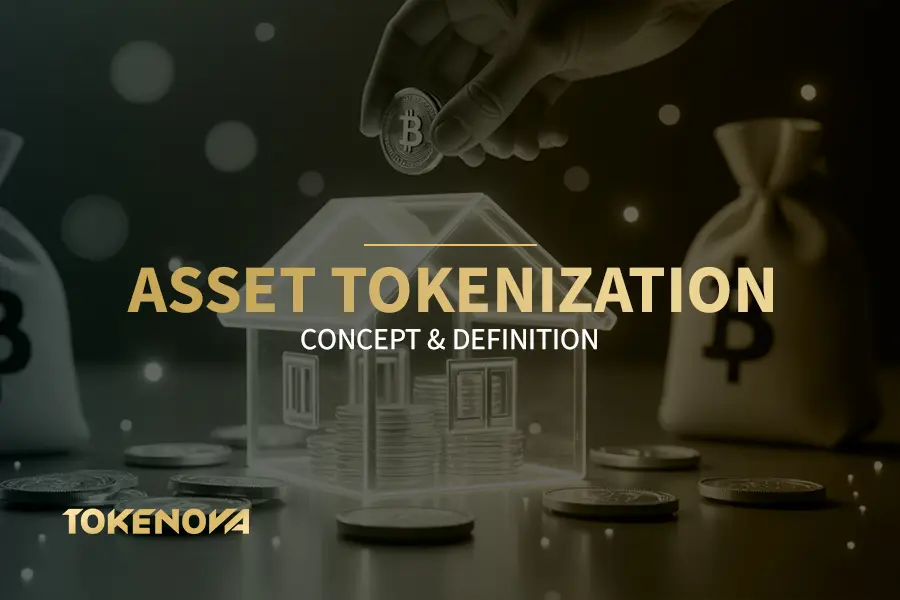
What is Asset Tokenization?
Asset tokenization is transforming modern finance by converting real-world assets—like real estate, art, or stocks—into digital tokens on a blockchain. These tokens represent ownership or shares of the asset, enabling fractional ownership and broader investor access. Traditionally illiquid assets become tradable in smaller units, reducing entry barriers and increasing liquidity.
At the core of this process is blockchain, a decentralized and immutable ledger that ensures transparency, security, and efficiency. By removing intermediaries like brokers and banks, asset tokenization simplifies transactions and supports compliance with evolving asset tokenization regulation frameworks.
The Key Benefits of Asset Tokenization
[insert infographic. Title: The Benefits of Asset Tokenization. The title should be in the middle. it should be connected to the list which is written in rectangular blocks. The list: 1. Increased Liquidity 2. Fractional Ownership 3. More Transparency 4. Faster Transactions 5. Lower Costs]
1. Increased Liquidity
Asset tokenization significantly improves liquidity by converting traditionally illiquid assets—like real estate and fine art—into smaller, tradable digital units. This process lowers capital barriers and broadens investor access.
Platforms such as RealT, operating under asset tokenization regulation, enable fractional ownership of properties, allowing quicker entry and exit compared to conventional real estate transactions.
Example: Tokenized real estate allows fractional ownership, reducing capital barriers and enabling faster entry and exit from markets. Platforms like RealT demonstrate how asset tokenization regulation can support greater market accessibility and liquidity.
2. Fractional Ownership
Tokenization enables fractional ownership of high-value assets like real estate or art, lowering capital barriers and expanding investor access.
Example: Platforms such as Masterworks offer regulated access to tokenized art markets without needing large investments.
- Impact: Assets are tokenized into smaller units, enabling investment at any scale, such as fractions of real estate or fine art.
- Real-World Example: Art platforms like Masterworks let collectors invest in fractional shares of iconic paintings, making blue-chip art markets accessible without multi-million-dollar capital.
3. Enhanced Transparency

Blockchain technology ensures transparency in asset tokenization by recording all transactions on an immutable public ledger. Ownership, transaction history, and asset details remain verifiable and tamper-proof.
- Impact: Blockchain enables investors to verify asset authenticity, track ownership, and confirm transactions. This transparency reduces fraud risks and strengthens trust—key elements in regulated asset tokenization.
- Example: In tokenized real estate, investors can easily verify ownership history on the blockchain, ensuring asset legitimacy and freedom from legal disputes—transparency that’s difficult to achieve in traditional markets.
4. Faster Transactions and Lower Costs
Tokenized assets benefit from blockchain’s speed and low costs. By removing intermediaries like banks and brokers, transactions become faster, cheaper, and more efficient.
- Impact: Tokenized asset transactions settle within minutes, unlike traditional assets that take days. Blockchain platforms also reduce costs through lower transaction fees, making asset tokenization more efficient and accessible.
- Example: Tokenized stocks can be traded directly on blockchain platforms, enabling near-instant settlement and lower fees by eliminating intermediaries.
The benefits are clear, but success in asset tokenization depends on navigating complex regulations. Robust regulatory frameworks are key to ensuring security and compliance.
Global Regulations: Where Asset Tokenization Stands Today and Tomorrow
As asset tokenization reshapes investment markets, global regulations must evolve to protect investors and ensure compliance. While frameworks are still developing, many regions are proactively addressing the challenges. Staying informed about regulatory shifts is essential for future-proofing strategies.
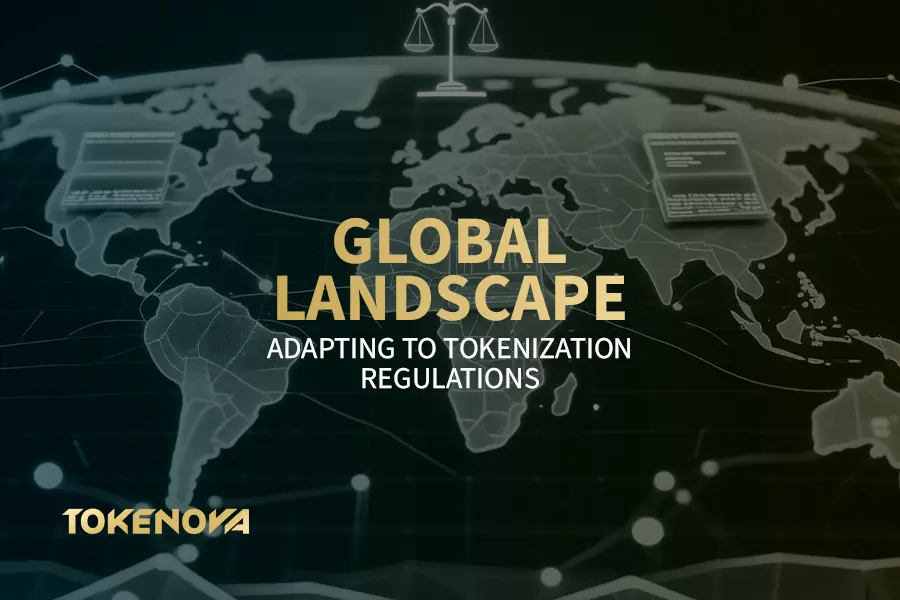
Let’s take a closer look at how three key regions—the United States, European Union, and Asia-Pacific—are addressing asset tokenization regulations and what the future holds.
| Region | Regulatory Body | Key Aspects |
| United States | Securities and Exchange Commission (SEC) | – Tokenized assets are often classified as securities under the Howey Test.- Companies must comply with existing securities laws, but specific regulations for blockchain-based securities are still evolving. |
| European Union | European Securities and Markets Authority (ESMA) | – The Markets in Crypto-Assets (MiCA) regulation aims to harmonize crypto regulations across member states.- MiCA will take effect on December 30, 2024, focusing on consumer protection and market integrity. |
| Japan | Financial Services Agency (FSA) | – A well-defined regulatory framework for cryptocurrencies and tokenized assets.- Emphasis on investor protection and compliance with existing financial regulations. |
| Singapore | Monetary Authority of Singapore (MAS) | – Clear guidelines for security tokens based on the principle of “same activity, same risk, same regulation.”- Established sandbox for innovative tokenization projects. |
1. United States: Navigating the SEC’s Regulatory Framework
The U.S., led by the SEC, plays a key role in shaping asset tokenization regulation. While cautiously supportive, the SEC treats tokenized assets as traditional securities to ensure investor protection and compliance with existing laws.
Key Regulatory Considerations:
- Tokenized Securities: The SEC treats tokenized assets as securities if they meet the investment contract criteria. In such cases, they must comply with traditional securities laws—like the Securities Acts of 1933 and 1934—requiring registration and full disclosure from issuers.
- Compliance Requirements: Token issuers must comply with AML and KYC regulations to prevent illicit activities like money laundering and terrorism financing. They need strong systems to verify investor identities and monitor suspicious transactions, ensuring secure and compliant tokenized asset trading.
- Impact: The SEC’s focus on AML and KYC ensures strong investor protection. Tokenization platforms must have tools to monitor transactions and verify participants’ legitimacy.
- Ongoing Regulatory Scrutiny: With the growth of tokenized assets, the SEC is increasing scrutiny on issuers and exchanges through audits and investigations to ensure compliance with securities laws.
- Future Trends: As the SEC intensifies scrutiny of the crypto market, tokenized assets will likely face new regulatory updates. These may introduce tailored frameworks balancing innovation with investor protection.
2. European Union: The MiCA Regulation
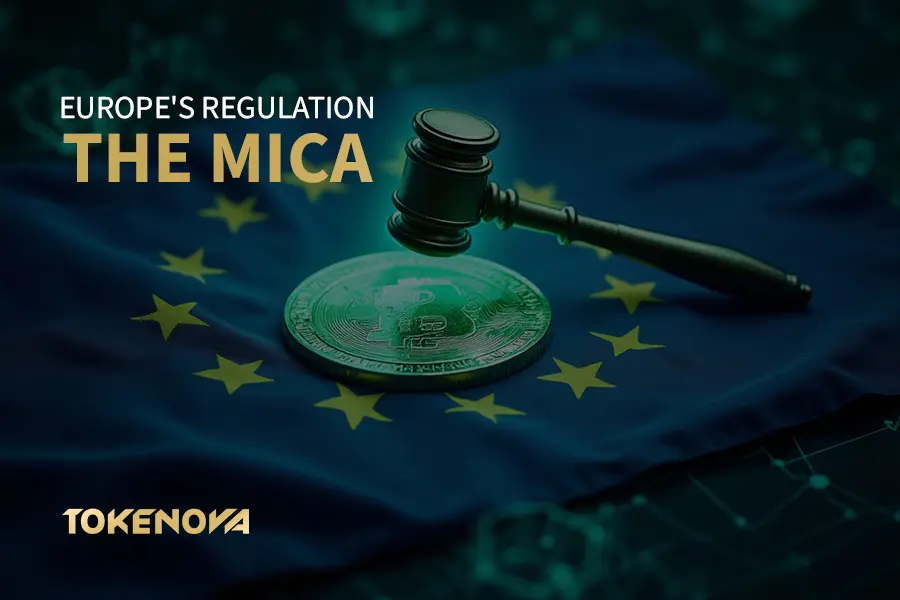
The EU’s Markets in Crypto-Assets (MiCA) regulation will reshape asset tokenization by creating a unified regulatory framework for crypto-assets, including tokenized assets, across all member states. Effective in 2024, MiCA will significantly affect businesses involved in asset tokenization.
What MiCA Covers:
- Legal Recognition of Tokenized Assets: MiCA legally recognizes digital tokens as binding assets, enabling businesses to tokenize real-world assets like real estate, securities, and commodities.
- Example: Under MiCA, tokenized real estate or tokenized bonds would be legally recognized as assets in the EU. Token issuers will need to comply with EU laws on securities, trading, and consumer protection, ensuring that investors can trade tokenized assets with the confidence that their ownership is legally secure.
- Consumer Protection: A main goal of MiCA is consumer protection. Token issuers must disclose key risks to investors, ensuring transparency and helping them make informed decisions.
- Impact: MiCA sets clear disclosure rules to minimize fraud in tokenized markets. Investors gain essential information on asset valuations, investment terms, and risks tied to tokenized assets.
- AML and KYC Compliance: MiCA requires token issuers to comply with AML and KYC rules, ensuring investors are properly vetted to prevent illegal activities in tokenized markets.
- Example: Similar to the U.S., MiCA mandates tokenization platforms to enforce KYC to verify investor identities, helping prevent illicit use of tokenized assets.
- Impact of MiCA on EU Tokenization: MiCA will unify asset tokenization regulation across the EU, providing a clear legal framework. This harmonization will boost investment and innovation by eliminating the need to comply with varied national rules.
3. Asia-Pacific: Regulatory Approaches in Japan and Singapore
The Asia-Pacific region features a dynamic regulatory landscape for asset tokenization. Japan and Singapore lead with clear, progressive regulations, making them attractive hubs for tokenization businesses.
Japan: A Pioneer in Digital Asset Regulation
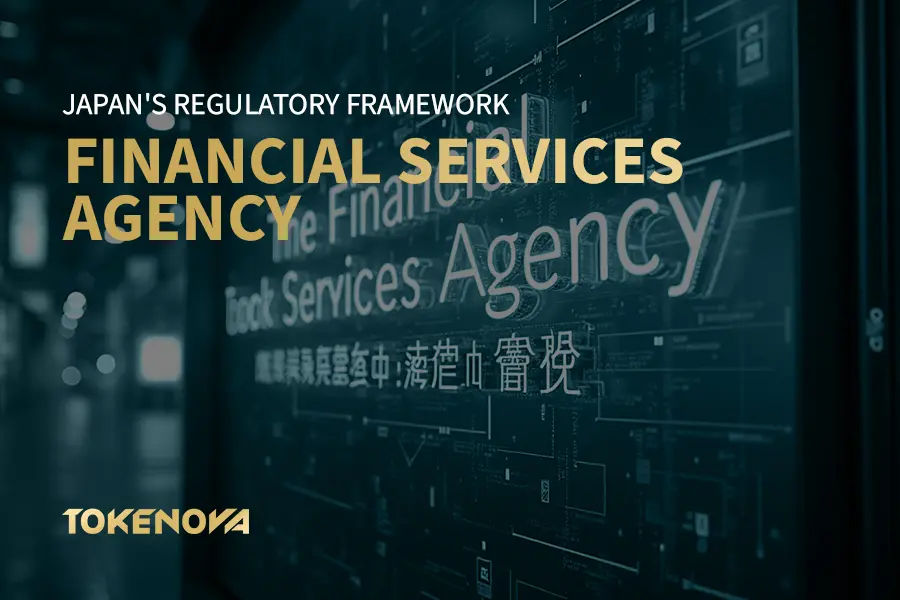
Japan was among the first to establish clear regulations for digital asset trading. The Financial Services Agency (FSA) oversees tokenized asset regulation, offering a transparent legal framework for token issuance and trading.
- Key Features of Japan’s Regulation:
- Japan requires exchanges handling tokenized assets to register with the FSA and comply with AML, KYC, and consumer protection regulations.
- Japan has established clear guidelines for classifying digital tokens, clarifying the legal status of tokenized assets for businesses and investors.
Singapore: A Crypto-Friendly Jurisdiction
Singapore is a leading crypto-friendly jurisdiction, with the Monetary Authority of Singapore (MAS) providing a clear regulatory framework for digital assets, attracting asset tokenization businesses.
- Key Features of Singapore’s Regulation:
- MAS’s Payment Services Act (PSA) regulates digital tokens, requiring token issuers to obtain licenses to operate legally under asset tokenization regulation.
- Singapore enforces strong AML and KYC regulations to ensure secure, compliant trading of tokenized assets.
- Impact on Tokenization in Singapore: TSingapore’s clear asset tokenization regulation fosters innovation and investor protection, making it a global hub for blockchain businesses.
The global regulatory landscape for asset tokenization is rapidly evolving. The U.S. SEC is cautiously advancing regulations for tokenized securities, the EU aims to harmonize rules with MiCA by 2024, and Asia-Pacific leaders like Japan and Singapore are establishing frameworks that promote innovation and investor confidence.
For businesses in asset tokenization, staying updated and compliant with regulations is key to future-proofing operations and ensuring a secure, compliant investment environment.
Legal Considerations in Asset Tokenization
As the asset tokenization market grows, legal compliance is vital for a secure, transparent, and sustainable marketplace. Understanding key legal considerations is essential for businesses and investors to navigate asset tokenization regulation successfully.
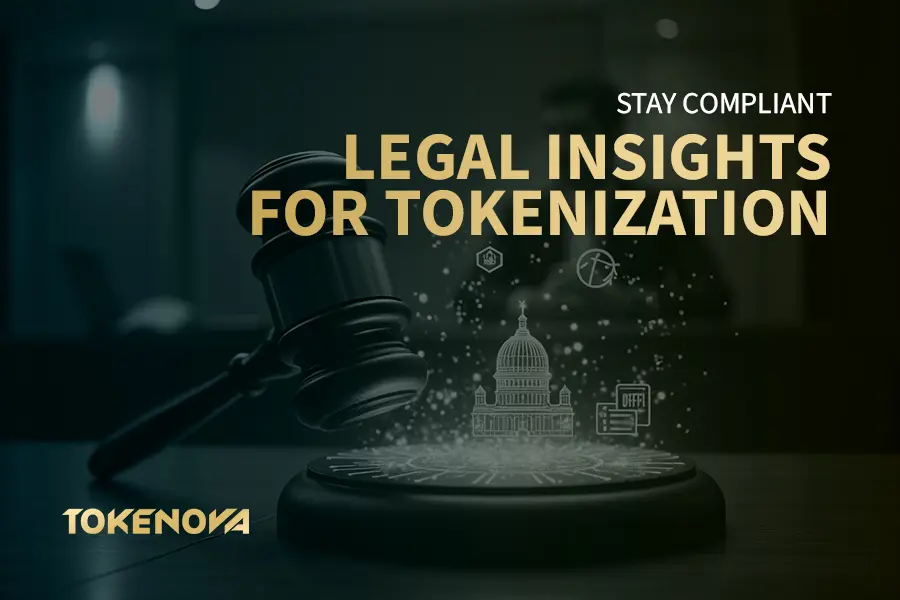
1. Securities Laws: Is Your Token a Security?
A key legal issue in asset tokenization regulation is whether a token qualifies as a security. If so, it must follow strict securities laws, including registration, reporting, and regulatory compliance. Noncompliance can result in serious legal and financial penalties.
The Howey Test: U.S. Approach to Determining Securities
In the U.S., the SEC uses the Howey Test to classify tokens as securities by assessing if they involve an investment in a common enterprise with expected profits from others’ efforts.
- Key Components of the Howey Test:
- Investment of Money: The investor must contribute money or assets to the tokenized offering.
- Common Enterprise: The investment must be in a common venture, where the fortunes of the investor are linked to the efforts of others.
- Expectation of Profit: Investors must have a reasonable expectation of profit derived primarily from the efforts of the token issuer or a third party.
- Efforts of Others: The success of the investment should depend on the managerial efforts of others, rather than the investor’s own efforts.
If a token meets all four criteria, it is classified as a security under U.S. law and must comply with securities laws, including filing registration with the SEC and providing investor disclosures to ensure protection.
- Example: A tokenized real estate asset is considered a security if profits rely on third-party management, triggering securities registration and investor protection requirements.
International Considerations
Other regions like the EU and Asia-Pacific also classify tokenized assets as securities. The EU’s MiCA Regulation aims to harmonize rules for crypto-assets, including tokenized securities. Businesses must carefully navigate each jurisdiction’s asset tokenization regulation.
| Legal Consideration | Description |
| Ownership and Transfers | Establishing a clear legal framework for ownership rights, transfer mechanisms, and compliance with property laws is essential. Legal agreements must reflect the nature of the token and its smart contracts |
| Regulatory Compliance | Tokenized assets often fall under securities laws, necessitating compliance with registration and reporting requirements. This includes understanding the legal status of the token in various jurisdictions . |
| Anti-Money Laundering (AML) Compliance | Compliance with AML laws is crucial to prevent illicit activities. Issuers must implement KYC processes and monitor transactions for suspicious activity. |
| Data Privacy Laws | Adherence to data protection regulations, such as GDPR in Europe, is necessary when handling investor data during the tokenization process. |
| Smart Contract Integrity | Ensuring the security and functionality of smart contracts is vital to mitigate risks associated with potential bugs or vulnerabilities in the code. |
| Asset Valuation and Due Diligence | Conducting thorough due diligence on the asset being tokenized, including valuation and legitimacy checks, is essential for investor protection. |
| Custody and Ownership Verification | Clear legal ownership must be established for the underlying asset, along with secure custody arrangements for physical assets. |
| Tax Implications | Understanding the tax implications of tokenizing and trading Risk Waited Assets (RWAs) is necessary, as these can vary by jurisdiction. |
2. AML and KYC Compliance: Securing the System
AML and KYC compliance are essential for asset tokenization, ensuring tokens aren’t used for money laundering, fraud, or terrorism financing. Platforms must verify investor identities and monitor transactions to detect suspicious activity.
AML Regulations: Protecting the Integrity of the Market
AML regulations require businesses to monitor, detect, and report suspicious transactions, conduct risk assessments, train staff, and follow protocols to prevent illegal activities on their platforms.
- Key AML Practices:
- Transaction Monitoring: Continuous monitoring of transactions for unusual patterns that may indicate illicit activity.
- Suspicious Activity Reporting (SAR): Filing reports with relevant authorities when suspicious activities are detected, such as large transactions from unverified sources.
- Record Keeping: Maintaining records of transactions and investor identification to allow for audits and investigations.
KYC Compliance: Verifying Investor Identities
KYC regulations mandate asset tokenization platforms to verify user identities, preventing fraud and misuse of blockchain anonymity in tokenized markets.
- Steps in the KYC Process:
- Identity Verification: Verify investor identities by collecting personal details like name, address, DOB, and ID.
- Due Diligence: Conduct due diligence to assess risk and check against sanctions lists.
- Ongoing Monitoring: Continuously monitor investor activity to maintain compliance.
Strict AML and KYC procedures help asset tokenization platforms reduce risks and comply with global regulations, protecting investors and platforms from financial crimes.
3. Data Privacy: Ensuring Personal Data Protection
Data privacy is crucial in asset tokenization. Platforms collecting investor information must comply with data protection laws to protect privacy and avoid legal, financial, and reputational risks.
Global Data Privacy Regulations
Businesses in asset tokenization must comply with data privacy laws like the EU’s GDPR, ensuring proper handling and storage of personal data from EU citizens.
- Key GDPR Principles:
- Data Minimization: Only the necessary amount of personal data should be collected, and it should be used only for the purposes for which it was collected.
- Data Security: Platforms must implement security measures to protect personal data from breaches, including encryption and secure storage.
- Consent: Investors must give explicit consent for their data to be processed, and they have the right to withdraw that consent at any time.
- Right to Erasure: Under GDPR, individuals can request that their personal data be deleted, and platforms must comply with such requests when legally required.
Besides GDPR, laws like the CCPA (U.S.) and PDPA (Singapore) also govern data privacy. Businesses must comply with relevant regulations based on their reach.
Legal factors—such as token classification, AML/KYC compliance, and data privacy—are crucial for secure, compliant asset tokenization.
Staying updated on regulations and following best practices helps businesses reduce risks and unlock tokenization’s potential. Success depends on balancing innovation with regulatory compliance in this evolving market.
Challenges in Regulatory Compliance
Asset tokenization has great potential to transform financial markets by democratizing access to high-value assets. However, navigating the complex and evolving asset tokenization regulation across different jurisdictions, technologies, and legal frameworks remains a major challenge that can slow market growth. Here are key compliance hurdles businesses face in this process.
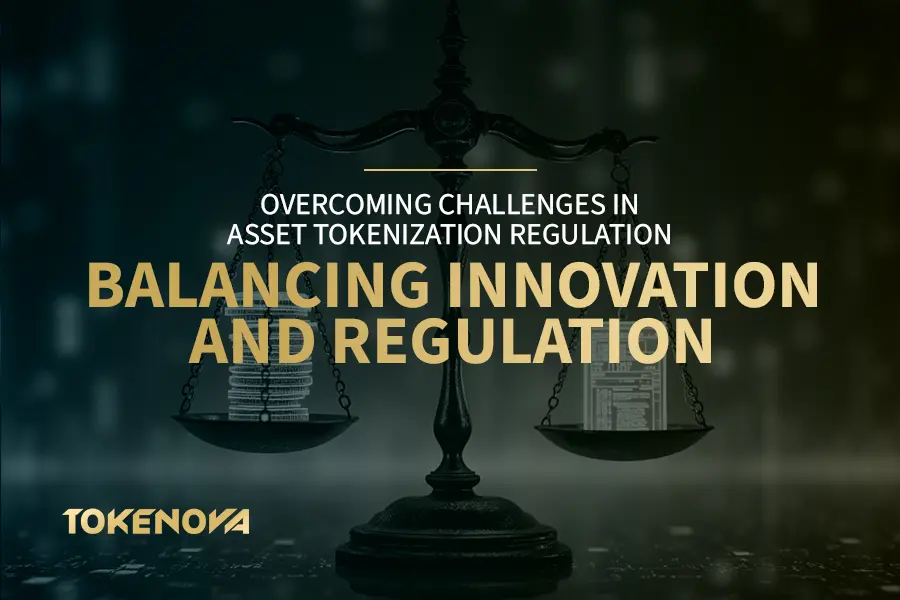
1. Navigating Varying Regulations
A major challenge in asset tokenization regulation is the varying rules across jurisdictions. Each country’s unique digital asset laws create complex compliance demands for global businesses, requiring them to navigate multiple legal frameworks to stay compliant.
Divergent Regulatory Approaches
Some countries like the U.S. and EU are developing comprehensive regulatory frameworks for tokenized assets, while others lack clear or updated laws addressing blockchain’s complexities.
- U.S.: The SEC classifies certain tokenized assets as securities, meaning businesses need to comply with strict securities laws. However, the regulatory approach is still developing, with uncertainty around issues like whether certain tokens are securities or commodities.
- EU: The MiCA Regulation aims to standardize the regulation of crypto-assets across the EU, which will benefit businesses operating in multiple European markets. However, some countries may have additional national regulations or interpretations that add complexity.
- Asia-Pacific: Countries like Singapore and Japan have taken a more progressive stance on blockchain regulation, establishing clear guidelines for businesses. However, other regions, such as China, have adopted restrictive measures that hinder the growth of tokenization.
Impact on Cross-Border Tokenization
For businesses involved in cross-border tokenization, navigating these varying regulations can become overwhelming. Operating in multiple jurisdictions means adhering to a complex mix of laws, including local securities regulations, anti-money laundering (AML) rules, and tax policies. This inconsistency can lead to delays, increased costs, and potential legal risks if businesses fail to comply with all the necessary requirements.
Businesses must work closely with legal experts to ensure compliance with international regulations and may need to adjust their tokenization strategies based on the jurisdictions in which they operate.
2. Technological Challenges
| Technological Challenge | Description |
| Scalability | As transaction volumes increase, many blockchain networks face limitations in processing speed and capacity, hindering widespread adoption of asset tokenization. |
| Interoperability | Diverse blockchain platforms often lack standardized protocols, making it difficult for different systems to communicate and work together seamlessly. |
| Smart Contract Vulnerabilities | Smart contracts can contain coding errors or be susceptible to exploits, leading to potential financial losses for investors if not properly audited and secured. |
| Security Risks | The decentralized nature of blockchain introduces risks such as hacking and data breaches, which can compromise the security of tokenized assets. |
| Private Key Management | Loss or theft of private keys can result in permanent loss of access to tokenized assets, emphasizing the need for robust key management practices. |
| Market Acceptance and Trust | Building trust in tokenized assets is crucial for market acceptance; skepticism about blockchain technology can hinder adoption among traditional investors. |
| Regulatory Compliance | Navigating varying regulatory landscapes across jurisdictions poses challenges for issuers and investors, complicating the legal framework for tokenized assets. |
| User Experience and Accessibility | Complex interfaces and technical knowledge requirements can deter potential users; improving user experience is essential for broader adoption. |
Another significant challenge in the asset tokenization process is ensuring that blockchain-based systems remain compliant with evolving regulatory standards. Blockchain, the underlying technology for asset tokenization, operates in a decentralized and pseudonymous manner, which can create friction with traditional regulatory frameworks designed for centralized systems.
Continuous Innovation and Adaptation
Blockchain technology is rapidly evolving, while regulators work to keep pace. This creates a dynamic and sometimes uncertain regulatory environment for asset tokenization. Token issuers must stay updated on regulatory changes and adapt their systems to ensure compliance.
- Smart Contracts and Legal Compliance: Tokenized assets use smart contracts to automate transactions, but ensuring their legal enforceability and regulatory compliance is challenging. Businesses must consult legal experts to align contract terms with local laws.
- Privacy and Security: Blockchain’s transparency complicates investor data protection. Tokenization platforms must balance openness with compliance to strict data privacy laws like GDPR, since blockchain’s irreversible transactions heighten risks of legal issues from data mishandling.
Regulatory Technological Standards
To comply with asset tokenization regulation, businesses must deploy technology that supports evolving laws, including real-time transaction monitoring, KYC/AML solutions, and data privacy safeguards. Platforms should also adapt to new tax and consumer protection rules.
3. Legal Uncertainty
Legal uncertainty is a major challenge in asset tokenization. As regulations evolve, unclear legal frameworks create risks for businesses and investors. Despite tokenization’s potential, the lack of clear, universal rules leads to legal gray areas that may expose businesses to significant risks.
Evolving Regulatory Landscape
Legal uncertainty remains as most jurisdictions are still developing comprehensive frameworks for digital assets. Regulations like the EU’s MiCA and U.S. SEC guidelines are progressing but may change from initial drafts.
- Impact on Innovation: Rapidly evolving asset tokenization regulation can hinder innovation, as token issuers may delay new products due to uncertainty about compliance. This also deters investment, as investors fear future legal changes affecting token value or legality.
- Unclear Legal Precedents: Many jurisdictions lack clear legal precedents for tokenized assets. For example, the U.S. SEC has yet to define classifications for some tokens, while the EU’s MiCA regulation is still being interpreted, causing regulatory uncertainty for businesses.
Legal Risks for Token Issuers and Investors
Legal uncertainty risks fines, sanctions, or shutdowns for issuers and potential losses for investors if token status changes. To reduce these risks, businesses must stay agile, monitor global regulations, and work with legal experts. Addressing regulatory variability, technological challenges, and legal ambiguity is essential for success. Flexible businesses are best positioned to seize opportunities in asset tokenization by proactively managing compliance and adapting to changes.
Case Studies in Regulatory Compliance for Asset Tokenization
As asset tokenization grows, businesses must navigate complex regulations to ensure legal compliance. Below are key case studies that highlight how companies have tackled regulatory challenges in tokenizing assets.
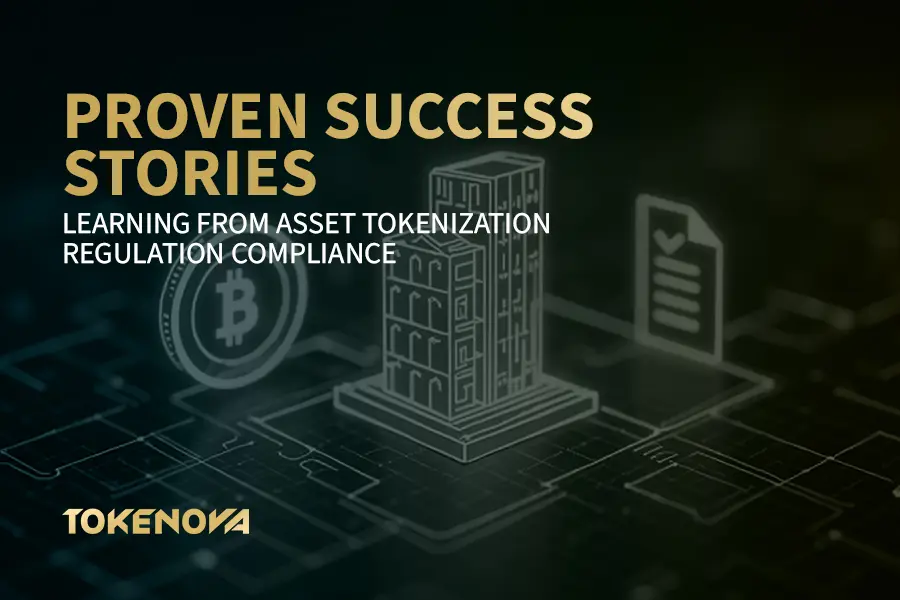
1. RealT Platform (U.S.) – Tokenizing Real Estate
Challenge:
RealT faced the challenge of complying with U.S. securities laws when tokenizing real estate. The SEC’s Howey Test helped determine whether the tokens would be classified as securities.
Solution:
RealT used Regulation D to offer securities exemptions and implemented KYC/AML procedures to ensure compliance with anti-money laundering laws.
Outcome:
RealT successfully tokenized real estate, offering fractional ownership to investors while adhering to regulatory requirements.
2. Swiss Crypto Tokens (SCT) – Security Token Offering in Switzerland
Challenge:
SCT had to ensure compliance with FINMA regulations when launching a Security Token Offering (STO) for tokenizing real estate and equities.
Solution:
SCT obtained FINMA approval, implemented AML/KYC processes, and ensured full transparency of risk disclosures.
Outcome:
SCT’s STO was compliant with Swiss financial regulations, positioning Switzerland as a leader in digital asset regulation.
3. Maecenas – Tokenizing Art (EU & Global)
Challenge:
Maecenas faced the challenge of ensuring its tokenized art complied with MiFID II and other EU financial regulations.
Solution:
Maecenas worked with legal advisors to meet MiFID II standards and incorporated AML/KYC procedures to verify investors.
Outcome:
Maecenas launched a compliant platform for tokenized art, expanding its reach globally with investor protections in place.
4. Paxos – Tokenized Gold (U.S.)
Challenge:
Paxos needed to ensure that PAXG, a token backed by gold,, complied with CFTC and SEC regulations.
Solution:
Paxos clarified PAXG’s classification as a commodity with the CFTC, and implemented comprehensive AML/KYC procedures.
Outcome:
Paxos successfully launched PAXG, offering a secure, regulated gold-backed token for investors.
These case studies demonstrate how businesses can successfully navigate regulatory hurdles in the tokenization space. Compliance with financial and anti-money laundering regulations ensures tokenized assets can thrive while protecting investors and maintaining trust.
Best Practices for Compliance in Asset Tokenization
Asset tokenization is reshaping industries, but staying compliant with ever-evolving regulations is crucial for success. Here are the best practices businesses should follow to ensure they remain compliant:
1. Understand Regulatory Frameworks
Stay informed about local and international regulations such as securities laws, AML, KYC, and data privacy. Consulting legal experts will help ensure compliance in different jurisdictions.
2. Implement AML and KYC Procedures
Verify investor identities and monitor transactions to prevent fraud. For higher-risk investors, implement enhanced due diligence (EDD) for added security.
3. Leverage Blockchain Transparency
Ensure transparency with blockchain technology by auditing smart contracts and maintaining on-chain reporting for better accountability.
4. Collaborate with Regulatory Authorities
Engage with regulators to ensure approval before launching tokenized assets and stay updated with regulatory changes to prevent legal issues.
5. Ensure Proper Legal Documentation
Draft clear terms of service and provide legally compliant offering documents to protect both businesses and investors.
6. Stay Adaptive to Regulatory Changes
Monitor regulatory developments and conduct periodic reviews to ensure compliance. Work with agile legal teams to adapt quickly to new laws.
7. Educate Stakeholders
Provide regular training for employees and investors on compliance requirements to ensure a well-informed network.
8. Choose Trusted Technology Partners
Work with blockchain platforms and technology partners who adhere to regulatory standards and conduct regular audits to maintain compliance.
9. Foster a Compliance Culture
Create a strong compliance culture by appointing dedicated compliance officers and implementing regular internal audits.
Staying compliant is key to navigating the asset tokenization landscape. Ready to tokenize securely? Reach out to Tokenova today to start your compliant tokenization journey!
Tokenova’s Expertise in Asset Tokenization
Tokenova specializes in providing end-to-end asset tokenization solutions, offering businesses an innovative approach to digitizing real-world assets. We understand that the regulatory landscape surrounding asset tokenization can be complex, and our expertise ensures that your tokenization strategy is fully compliant with global regulations, helping you navigate through the evolving rules.
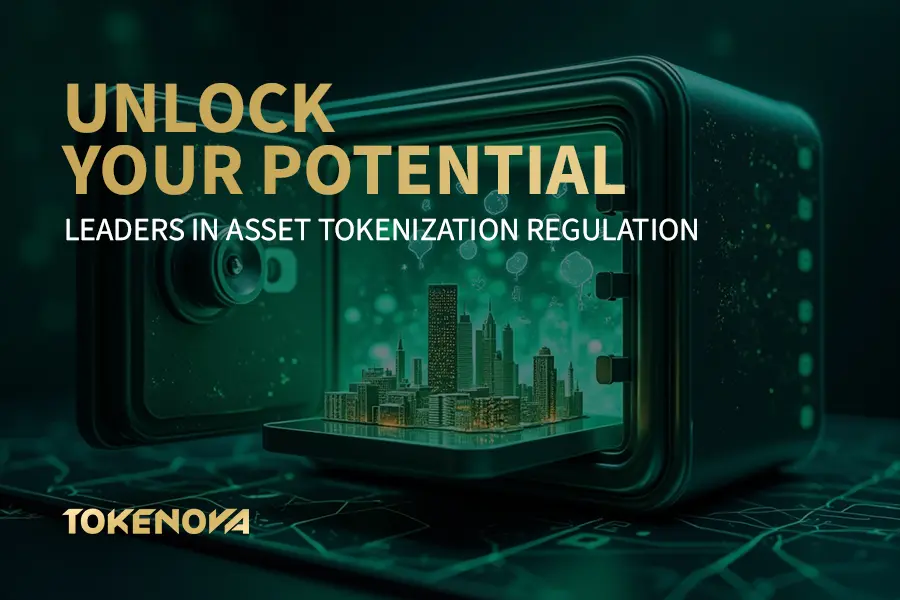
Our team has worked with a diverse range of clients across industries like real estate, fine art, commodities, and financial securities. With a focus on transparency, security, and efficiency, we help businesses tokenize high-value assets and unlock new investment opportunities while enhancing liquidity. Our track record includes successful tokenization projects that have empowered clients to tap into global markets and improve accessibility for investors.
Why Choose Tokenova’s Consulting Services?
- Comprehensive Legal and Regulatory Expertise: We understand the nuances of asset tokenization regulations worldwide, from the SEC’s compliance requirements in the U.S. to MiCA in the European Union and other key jurisdictions. Our consultants help you stay on top of shifting regulatory requirements, ensuring that your tokenization strategy remains compliant and future-proof.
- Tailored Tokenization Strategies: Tokenova works closely with clients to develop customized tokenization solutions that align with your specific business goals. Whether you’re looking to tokenize real estate portfolios, artwork, or stocks, we design a strategy that fits your unique needs and ensures optimal asset performance.
- Market-Leading Technology and Security: With Tokenova, your tokenization process is powered by advanced blockchain technology, ensuring robust security, transparency, and efficiency. Our systems are designed to streamline transactions and reduce costs, making tokenized assets more accessible to investors.
- Proven Success: Tokenova has successfully assisted businesses in tokenizing various asset classes. From increasing liquidity in real estate markets to enabling fractional ownership of fine art, our case studies showcase how we’ve helped clients unlock new opportunities.
Are you ready to dive into asset tokenization and harness its potential for your business? Let Tokenova’s experienced consultants guide you through every step of the process—ensuring compliance, maximizing liquidity, and opening doors to new investors.
- Get Expert Consultation: Schedule a consultation to discuss how asset tokenization can transform your business. Our team will help you understand the regulatory landscape, create a roadmap for tokenization, and assist with legal, technical, and operational support.
- Contact Us: Reach out to Tokenova now to start your journey toward efficient, compliant, and secure asset tokenization. Schedule a Consultation or Contact Us to get started.
Let Tokenova’s expertise in asset tokenization empower your business for the future.
Conclusion
Asset tokenization is revolutionizing finance by increasing liquidity, enabling fractional ownership, and enhancing transparency. However, businesses must navigate a complex regulatory landscape to maximize these benefits. From the SEC’s regulation in the U.S. to the MiCA framework in the EU and Asia-Pacific’s crypto-friendly policies, understanding these regulations is crucial for success.
Key legal considerations like securities laws, AML/KYC compliance, and data privacy are essential to ensure secure and compliant tokenization. While challenges such as varying regulations and technological hurdles remain, staying informed and engaging with legal experts can help businesses thrive in this space.
Key Takeaways
- Asset tokenization offers benefits like fractional ownership, increased liquidity, and enhanced transparency for a wide range of assets.
- The global regulatory landscape is complex, with regions like the U.S., EU, and Asia-Pacific taking different approaches to regulation.
- Legal considerations such as securities laws, AML/KYC compliance, and data privacy must be addressed to ensure tokenization is secure and legally sound.
- Overcoming regulatory challenges requires businesses to stay informed and adapt to the evolving legal framework.
- Best practices for compliance include legal assessments, strong AML/KYC protocols, and proactive engagement with regulatory authorities.
Stay ahead of the curve in the rapidly evolving asset tokenization space. Contact Tokenova today for expert guidance and tailored tokenization strategies to ensure your business remains compliant and positioned for success.
Pro Tips for Navigating Asset Tokenization Regulations:
- Stay Ahead of Regulatory Changes: Global regulations are evolving. Monitor updates regularly to ensure compliance.
- Consult Legal Experts: Work with legal professionals who specialize in blockchain and digital asset regulation.
- Leverage Secure Platforms: Choose platforms with strong security measures and a proven track record in tokenization.
- Focus on Transparency: Build trust by ensuring your tokenized assets comply with transparency and disclosure regulations.
- Prepare for Jurisdictional Differences: Understand the regulatory environment in each region where you plan to operate.
References:
Asset tokenization regulation: A guide for tech companies
How to Navigate the Changing Global Regulatory Landscape of Asset Tokenization?
How do asset tokenization and traditional asset management differ?
Asset tokenization digitizes physical assets, allowing them to be divided into smaller, tradable units. Unlike traditional asset management, which often requires large capital to invest in whole assets, tokenization enables fractional ownership, providing greater access and liquidity to a broader range of investors.
What are the most common legal mistakes in asset tokenization?
Common mistakes include misclassifying tokenized assets as non-securities when they should be regulated as such, failing to comply with AML/KYC regulations, and not ensuring the protection of personal data as required by GDPR or other data privacy laws.
Which jurisdictions are most favorable for asset tokenization businesses?
Singapore and Switzerland are among the most favorable due to their crypto-friendly regulatory environments. The European Union’s MiCA regulation, as well as the U.S. with the SEC’s evolving stance on tokenization, also represent key jurisdictions for businesses looking to tokenize assets.
How can businesses stay compliant with changing regulations in asset tokenization?
Businesses should proactively monitor regulatory updates, work closely with legal experts, and implement robust compliance frameworks that include regular audits, AML/KYC procedures, and data privacy protections. Staying agile and adapting to regulatory shifts is essential for long-term success.






